Don’t Go Off-Road Without Your Passport
By John Gilbert
It was a novel idea, back when Honda was making better and better small cars and wanted to add a compact utility vehicle to its model line, which led them to an arrangement with fellow-Japanese manufacturer Isuzu to rebadge the Isuzu Rodeo as the Honda Passport.
It was a reasonable success until Honda dropped the Passport in the 1990s and produced its own CR-V. And Pilot, and HR-V, and the Acura upscale RDX and larger MDX.
Nowadays it seems as though no manufacturer can have enough crossover SUVs, so Honda has added another new one, borrowing from the Pilot’s platform and powertrain gaining a more aggressive utility attitude, and squeezing in between the CR-V/HR-V and the Pilot in pecking order. Somebody came up with the idea of naming it (drumroll, please) the Passport!
U.S. customers have evolved into this near-crazy emphasis on SUVs of all shapes, sizes and styles, so Honda engineers created the midsize Passport, capable of light off-road duty. A stylish, more-than-just-user-friendly vehicle emerged. It hit the market in time for this year’s auto-show circuit, and it made a favorable impression, even if it seemed to be a niche vehicle for which there may not be a niche.
The Pilot is one of the best larger, 3-row-seat family haulers on the market, and the CR-V is a runaway best seller as a compact. If the Passport had to be a potent performer, it had a head start with the potent 3.5-liter V6 out of the Pilot, giving it 280 horsepower and 262 foot-pounds of torque. That’s all harnessed by a 9-speed automatic transmission with steering wheel paddle shifters.The Passport has 20-inch wheels — at least on the Elite test model — and a tad more ground clearance. But let’s face it, the Passport has a sporty demeanor and an aggressive appearance, but there’s a good chance 90 percent of them are never going to go farther off-road than that driveway to the cabin that has a little grass growing between the two tire lanes.
At $45,695, the Passport is priced right there with prime competitors such as the Ford Edge, the new Chevrolet Blazer, and numerous others. However, some rivals are less expensive, such as the very competent and high-tech Hyundai Santa Fe.
But Honda’s slick reputation will help the Passport carve out some sales. With so many crossover SUVs on the market, it gets difficult to impossible for any of them to stand out, but the Passport strikes a meaningful pose.
The Passport Elite that I drove appeared to be black in subdued light, but when you got close to it, or the sun came out, you realized that it actually is a spectacular Black Forest metallic that will warm the hearts of any folks who wonder why there aren’t more green vehicles on the road.
My family loves green, although my wife, Joan, avoids even looking at that new neon green that has become a popular shock shade. My older son, Jack, likes all greens, and favors the bright Kawasaki racing green that used to adorn their motorcycles. Younger son, Jeff, might lean toward the darker forest green of Bemidji State University’s athletic teams, perhaps because he graduated from there.
My preference is like Jeff’s, the darkest green possible. So while Joan and Jack thought the Passport was surprisingly stunning, I thought it was the perfect paint job from first exposure. The metallic that made the green modulate in sunlight makes the dark green just that mucn better. Besides, Jack likes the idea of blacking out all trim, so the black alloy wheels were an added attraction on the Passport’s Black Forest paint.
The 3.5 V6 is quick, and the 9-speed transmission is efficient, and you can paddle it for quicker performance if you put the shift thingie into manual mode. Good stability in cornering, quiet running, an attractive interior, and all the requisite creature-features make a solid family package.
There are countless features packed in. Honda markets it as a more-aggressive SUV but knows even compact SUV buyers want luxury and high-tech features whether on or off the road.
A hands-free tailgate can be activated by your foot while carrying parcels, and once open, there is under-floor storage space, and the foldable rear seats can expand storage greatly. The rear seats have window shades, and the front buckets are heated and ventilated, while the rear seat gets heat only.
The grey leather interior also is a nice touch with the Black Forest exterior, and the 10-speaker premium audio and navigation screen offer all the connectivity alternatives so important to contemporary buyers. Stability control, Honda’s ACE safety cage, lane detection, rear view camera with cross-traffic assist, a large sunroof, and push-button start, hill-start assist and being a mobile hot-spot are added items.
In Honda’s relentless pursuit of push-button controls, it has freed up space on the console by eliminating the gearshift lever, replacing it with a little rectangle that houses a push button for getting shifted into drive, into neutral, in the middle, and into reverse up at the top. The first few times you drive it, however, you may search for a while before you find park, which is a separate button.
I have this concern that veteran drivers who are used to conventional shift patterns might stop, shifting up to the top of the panel to find park, and then overlook the stop-start feature, which cuts power to save fuel and emissions at stoplights. In a hurry, you stop, shift into reverse thinking it’s in park, then jump out and slam the door. Might be an unpleasant surprise to realize it is not shut off, just idle-stopped, and that you are not in park, but reverse. As your Passport drives away, backwards, over the hillside, you will notice you need more training.
Maybe that’s ridiculous, but it came close to happening to me. I started to get out to add fuel and I had one foot out before it started to roll backwards, and with great relief I reached back, switched it into park, and hit the push-button start-stop to firmly engage stop.
All of these modern items would become routine after you owned the Passport for a few weeks. You will immediately appreciate the brightness of your LED headlights and foglights.
You might even make a bad pun or two if you have occasion to cross the border into Canada, for example. When the border patrol person asks where your passport is, you can say “I’m driving it.” On second thought, don’t do that. Border patrol agents probably have developed a good sense of humor, but you might get one at the end of a long day. And if they realize you’re driving a Passport, you’ll realize that it’s not their first Rodeo.


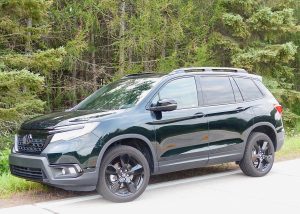
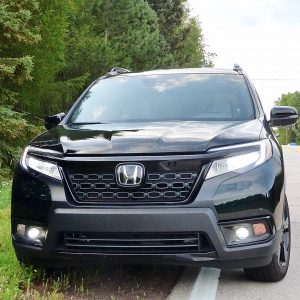
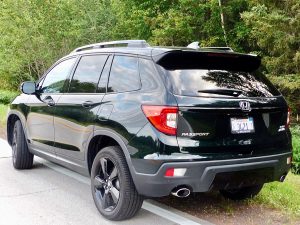
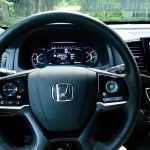
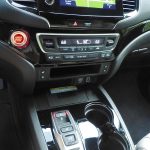
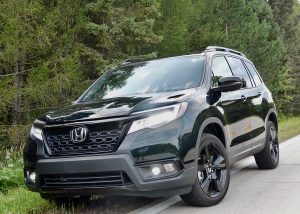
 John Gilbert is a lifetime Minnesotan and career journalist, specializing in cars and sports during and since spending 30 years at the Minneapolis Tribune, now the Star Tribune. More recently, he has continued translating the high-tech world of autos and sharing his passionate insights as a freelance writer/photographer/broadcaster. A member of the prestigious North American Car and Truck of the Year jury since 1993. John can be heard Monday-Friday from 9-11am on 610 KDAL(www.kdal610.com) on the "John Gilbert Show," and writes a column in the Duluth Reader.
John Gilbert is a lifetime Minnesotan and career journalist, specializing in cars and sports during and since spending 30 years at the Minneapolis Tribune, now the Star Tribune. More recently, he has continued translating the high-tech world of autos and sharing his passionate insights as a freelance writer/photographer/broadcaster. A member of the prestigious North American Car and Truck of the Year jury since 1993. John can be heard Monday-Friday from 9-11am on 610 KDAL(www.kdal610.com) on the "John Gilbert Show," and writes a column in the Duluth Reader.